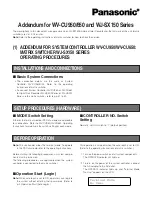
26
WEB-ENABLED INTERNET POWER SWITCH
5. Configuration
5.1 System Mode and User Mode
To restrict access to sensitive command functions, the IPS features two operating
modes: system mode and user mode.
• System mode allows access to all configuration menus, switching functions,
and status screens. The system mode status screens show on/off conditions for
all switched outlets and lists currently defined system parameters.
• User mode permits access to all status screens and on/off/boot commands,
but does not allow access to configuration menus and functions. In this mode,
you can direct commands to all satellites and view status screens, but you’re
not allowed to change configuration parameters.
The IPS displays a password prompt when it is contacted via the console port or
network port. The password entered at this prompt determines whether the IPS
will start up in system mode or user mode. If you enter the system password, the
system mode is active. If you enter the user password, the user mode is active. Both
the system password and user password are defined via the General Parameters
menu as described in
Section 5.3.1
.
NOTES
To restrict user access to configuration menus, define the system
password. If the system password is not defined, the IPS will always
start up in system mode.
If the system password is not defined, the password prompt does not
display when you access the IPS via the text interface. The prompt
always displays when you contact the IPS via the Web browser
interface.
When you contact the IPS via the network, the password prompt
includes a field for the user name. If you have not defined a user name,
then leave this field blank. In this case, only the password is required to
gain access to the IPS. The user name prompt does not display when
you contact the IPS via the text interface.
















































